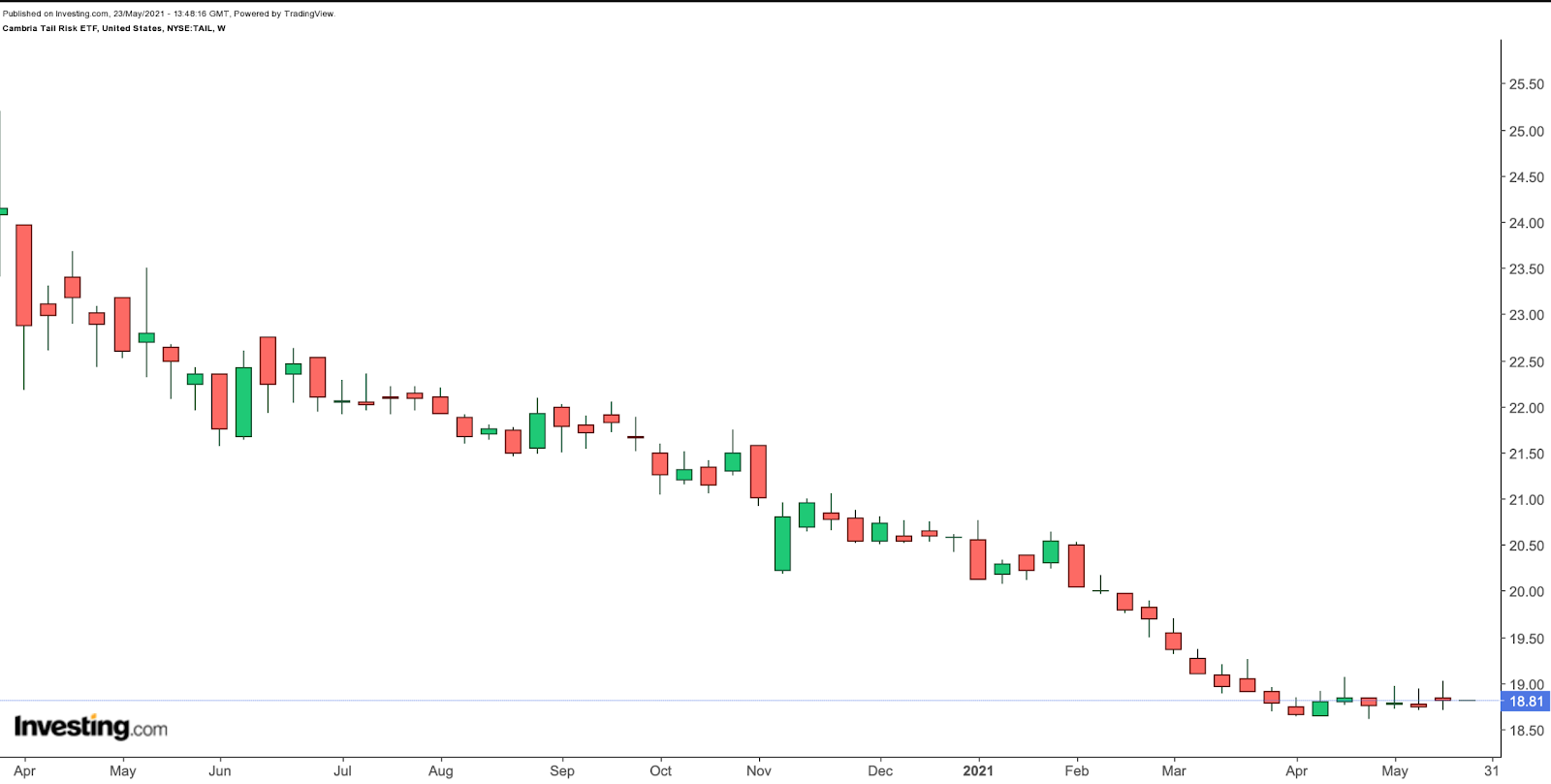May has seen market volatility return with a downward bias. Given the impressive double-digit increases in broader indices over the past year, as well as the sky-high valuations, investors may be wondering how they can hedge their portfolios against a potential hit.
Diversifying To Reduce Volatility Of Returns
To hedge their portfolios, investors typically add diverse positions to reduce the volatility of returns. A wide range of hedging tools and approaches are available.
As part of diversification, market participants can buy exchange-traded funds (ETFs) that could help protect portfolios, or even help profit, when markets decline. Today's article will focus on the S&P 500 index, which has risen around 10.6% year-to-date (YTD) and 40.9% in the past 12 months. The index reached an all-time-high (ATH) on May 7.
In January, we discussed how investors could consider buying the SPDR® S&P 500 (NYSE:SPY) to participate in the index's moves higher. SPY is currently around $415, and the up moves in the ETF mirrors those of the index.
Today, we’ll address two ETFs that may help investors who are nervous about risks in broader markets in the short-run.
1. Cambria Tail Risk ETF
- Current Price: $18.82
- 52 Week Range: $18.61 - $22.75
- Dividend Yield: 1.26%
- Expense Ratio: 0.59% per year
We've discussed various hedging strategies using covered calls with LEAP options, straight put purchases, and put spreads in previous articles. Such strategies can be used for both hedging and speculative purposes.
Nonetheless, most retail investors do not feel comfortable with these more sophisticated approaches, even if just for hedging. Therefore, we're seeing an increased number of niche ETFs with derivative strategies come to the market.
The Cambria Tail Risk ETF (NYSE:TAIL), which has a portfolio of put options purchased on the US stock market, is an example of such funds.
TAIL started trading in April 2017 and has over $292 million in assets. This actively-managed fund is defensive in nature whereby it aims to mitigate significant downside market risk.
TAIL invests a small percentage (slightly over 5%) in a basket of out-of-the-money (OTM) put options on the S&P 500 index. These put options are a bet on a decline in the index and an increase on the volatility. The rest of the assets of TAIL are in US Treasuries and cash.
Since the start of the year, TAIL is down 8.5%. It hit a record low in late April, around the same time the S&P 500 was making a record high. Put another way, the bull market means losses, albeit limited, for TAIL. This fund will lose money in years when the S&P 500 is positive.
But those investors who now expect the performance of S&P 500 to decline and volatility to rise in the coming weeks could consider buying TAIL as a short-term hedge. If the S&P 500 declines, they can expect the fund to see positive returns.
2. ProShares Short S&P 500
- Current Price: $15.97
- 52 Week Range: $15.69 - 23.84
- Expense Ratio: 0.9%
The second ETF is an inverse exchange-traded fund. Although inverse funds can be effective hedging tools, they are more appropriate for short-term trading as opposed to long-term investing. Therefore, traders need to monitor portfolios carefully and possibly rebalance positions to maintain the hedge.
The ProShares Short S&P500 (NYSE:SH) seeks daily investment results that correspond to the inverse (-1x) of the daily performance of the S&P 500 index. It started trading in June 2006, and net assets stand at $1.53 billion.
Due to the compounding of daily returns, any holding period for longer could easily result in returns that significantly differ from the target of -1x. Put another way, for periods longer than a single trading day, SH may not necessarily move inversely to the S&P 500.
To achieve the desired inverse effect on a daily basis, such inverse funds hold derivative products—mostly futures and swap agreements. Over longer periods, time decay and the negative rebalancing effect come into play.
So far in the year, SH is down about 11%, and in the past 12 months, it has lost close to 33% of its value. For short-term objectives, bear funds can be valuable, especially for experienced traders. Long-term retail investors should learn more about how inverse funds work before jumping the gun.
